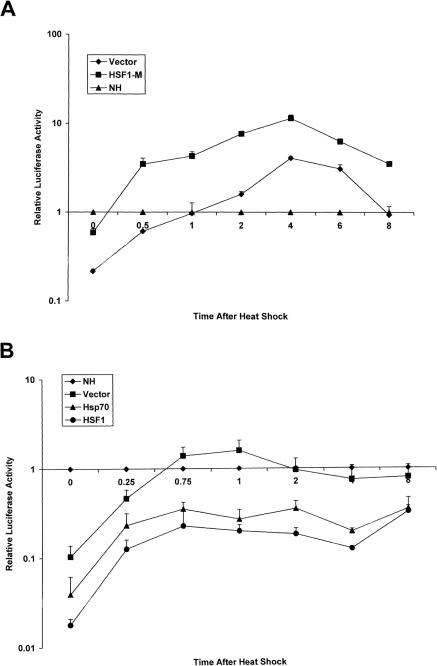Fig 4.
The role of HSP70 in repression of the c-fos promoter under heat shock conditions. (A) CHO-K1 cells were cotransfected with the c-fos promoter reporter plasmid (250 ng/well) and either the dominant negative HSF1-M construct (100 ng/well) or the empty (pcDNA 3.1(−)) plasmid (100 ng/well). Sixteen to 20 hours after transfection, cells were treated with or without heat shock (42.5°C for 1 hour). Cells were then assayed for luciferase activity at various intervals. Luciferase activity in heat-shocked cells is normalized to activity in non–heat-shocked cells. Lines represent mean relative luciferase activity ± standard deviation and show results from 3 independently performed experiments. (B) CHO-K1 cells were cotransfected with the c-fos promoter reporter plasmid (250 ng/well) and either the wild-type HSF1 construct (100 ng/well) or HSP70 (100 ng/well) or the empty (pcDNA 3.1(−)) plasmid (100 ng/well). Sixteen to 20 hours after transfection, cells were treated with or without heat shock (42.5°C for 1 hour). Cells were then assayed for luciferase activity at various intervals. Luciferase activity in heat-shocked cells is normalized to activity in non–heat-shocked cells. Lines represent mean relative luciferase activity ± standard deviation and show results from 3 independently performed experiments

